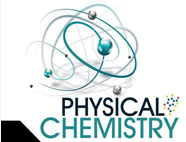


 علم الكيمياء
علم الكيمياء 
 الكيمياء التحليلية
الكيمياء التحليلية 
 الكيمياء الحياتية
الكيمياء الحياتية 
 الكيمياء العضوية
الكيمياء العضوية 
 الكيمياء الفيزيائية
الكيمياء الفيزيائية
 الكيمياء اللاعضوية
الكيمياء اللاعضوية 
 مواضيع اخرى في الكيمياء
مواضيع اخرى في الكيمياء
 الكيمياء الصناعية
الكيمياء الصناعية | Mass spectra, NMR, and IR combined make quick identifi cation possible |
|
|
|
أقرأ أيضاً
التاريخ: 6-1-2022
التاريخ: 2025-04-15
التاريخ: 14-11-2019
التاريخ: 1-9-2019
|
If these methods are each as powerful as we have seen on their own, how much more effective they must be together! We shall finish this chapter with the identifi cation of some simple unknown compounds using all three methods. The fi rst is an industrial emulsifier used to blend solids and liquids into smooth pastes. Its elecrospray mass spectrum shows it has M + H with a mass of 90, so an odd molecular weight (89) suggests one nitrogen atom. High-resolution mass spectrometry reveals that the formula is C4H11NO.
The 13C NMR spectrum has only three peaks so two of the carbon atoms must be the same. There is one signal for saturated carbon next to oxygen, and two for other saturated carbons, one more downfi eld than the other.
The IR spectrum reveals a broad peak for an OH group with two sharp NH2 peaks just protruding. If we put this together, we know we have C–OH and C–NH2. Neither of these carbons can be duplicated (as there is only one O and only one N) so it must be the other two C atoms that are the same.
The next stage is one often overlooked. We don’t seem to have much information, but try and put the two fragments together, knowing the molecular formula, and there’s very little choice. The carbon chain (shown in red) could either be linear or branched and that’s it!
There is no room for double bonds or rings because we need to fi t in the 11 hydrogen atoms. We cannot put N or O in the chain because we know from the IR that we have the groups OH and NH2, which can each be joined only to one other group. Of the seven possibilities only the last two, A and B, are possible since they alone have two identical carbon atoms (the two methyl groups in each case); all the other structures would have four separate signals in the NMR. So, how can we choose between these? The solution is in the 1H NMR spectrum, which is shown below. There are only two peaks visible: one at 3.3 and one at 1.1 ppm. It’s quite com mon in 1H NMR spectra not to see signals for protons attached to O or N (you will see why in Chapter 13) so we can again rule out all structures with more than two different types of H attached to C. Again, we are left with A and B, confirming our earlier deductions. But the chemical shift of the signal at δ 3.3 tells us more: it has to be due to H atoms next to an oxygen atom because it is deshielded. The industrial emulsifier must therefore be A: 2-amino-2 methylpropan-1-ol.



|
|
|
|
دراسة تكشف "مفاجأة" غير سارة تتعلق ببدائل السكر
|
|
|
|
|
|
|
أدوات لا تتركها أبدًا في سيارتك خلال الصيف!
|
|
|
|
|
|
|
العتبة العباسية المقدسة تؤكد الحاجة لفنّ الخطابة في مواجهة تأثيرات الخطابات الإعلامية المعاصرة
|
|
|